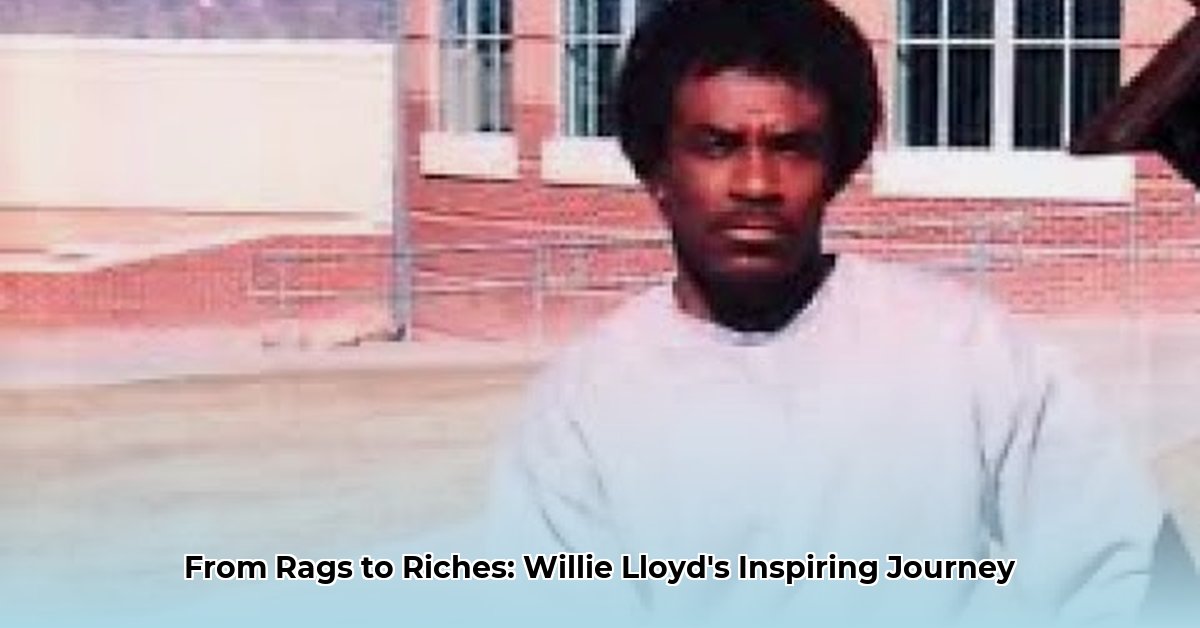
Willie Lloyd's Journey: From Incarceration to Inspiration
Forget the elusive figure of Willie Lloyd's net worth; his true value lies in the remarkable transformation he's undergone. This isn't a story about dollars and cents; it's a powerful narrative of resilience, redemption, and the transformative power of second chances. Willie's journey, from involvement in gang life and a prison sentence for murder to becoming a construction instructor at Summit Academy OIC, speaks volumes about the potential for positive change—and the crucial role of support systems in facilitating it. But how did he achieve such a dramatic shift? And what lessons can we glean from his experience to improve reentry programs nationwide?
The weight of his past hung heavy, but Willie Lloyd clung to a lifeline – a construction job at Summit Academy OIC, an organization specifically designed to help individuals rebuild their lives after incarceration. This wasn't just about earning a paycheck; it was about reclaiming his identity and building a future free from the constraints of his past. How many other individuals, struggling under similar burdens, could benefit from similar opportunities?
From Gangs to Guiding Others: A Transformation Fueled by Purpose
Willie Lloyd Jr.'s past was marred by gang involvement and a prison sentence for murder. This isn't a detail to be glossed over; it's the foundation upon which his remarkable transformation is built. But his story isn't solely defined by his past mistakes. Today, he stands as a testament to the potential for rehabilitation, serving as a construction instructor at Summit Academy OIC, a beacon of hope for others navigating similar challenges. He's not just building structures; he's building futures. Can we realistically scale his success and create similar pathways to redemption for others embroiled in cycles of crime and incarceration?
The Power of Belief: A Supportive Network as a Catalyst for Change
Willie's remarkable turnaround wasn't a solitary feat; it was a testament to the power of a supportive community. The Summit Academy OIC reentry program, a crucial partnership with Hennepin County, provided him with the skills and resources he desperately needed. But equally crucial was the unwavering belief of individuals like De'Vonna Pittman, a key figure at the academy who saw his potential, despite his past. Her faith in him became a catalyst for his transformation. This highlights the vital role of mentors and supportive networks in successful reintegration. How can we cultivate this type of supportive environment on a larger scale?
Navigating Prejudice: The Persistent Barriers to Successful Reentry
Even with his impressive achievements, Willie continues to encounter prejudice and societal biases. The stigma attached to his criminal record remains a significant barrier, hindering his full integration into society. This underscores the need for systemic shifts in how we view and treat individuals with past convictions. Many employers remain hesitant to hire those with criminal records, perpetuating a cycle of exclusion. This begs the question: How can we foster more inclusive hiring practices that prioritize rehabilitation and give individuals like Willie a fair chance?
Addressing Systemic Issues: Intergenerational Trauma and the Cycle of Violence
Willie's story sheds light on the broader societal issues that contribute to cycles of incarceration. His father's history of gang leadership highlights the impact of intergenerational trauma and the deeply ingrained patterns of violence that extend across families. This complex reality underscores the urgent need for programs that tackle not just individual rehabilitation, but also the systemic issues—poverty, lack of opportunity, and societal prejudice—that perpetuate crime. How can we intervene more effectively to break this cycle of intergenerational trauma?
Sustaining Success: The Long-Term Challenges of Reintegration
Willie's journey is a testament to resilience, but it also raises crucial questions about the long-term sustainability of such transformations. High recidivism rates among formerly incarcerated individuals serve as a stark reminder of the fragility of these achievements. While Willie’s success offers hope, it also underlines the ongoing need for robust support systems and systemic change. How can we ensure that individuals like Willie can maintain their positive trajectories and avoid relapse?
Building a Brighter Future: A Multifaceted Approach to Successful Reentry
Creating truly effective reintegration programs demands a comprehensive and multifaceted approach. This includes:
Expanding Access to Comprehensive Job Training & Placement: Direct connections to employment opportunities are critical. We need to equip individuals with marketable skills and provide ongoing support to maintain employment.
Building Strong Support Networks: Mentorship, counseling, and ongoing social support are crucial – creating a safety net to prevent relapse.
Addressing Systemic Barriers: Poverty, lack of opportunity, and pervasive societal prejudices must be addressed for sustainable success. This requires systemic reform.
Promoting Family Reunification and Healing: Strong family support is a powerful catalyst for positive change and significantly reduces recidivism.
These aren’t simply recommendations; they are essential investments in building safer, more equitable communities.
A Framework for Risk Mitigation in Reentry Programs
| Program/Technology | Risk Level | Mitigation Strategies |
|---|---|---|
| Vocational Training | Moderate | Continuous skills development, regular check-ins, robust job placement support |
| Mentorship and Support | Moderate | Rigorous mentor screening, ongoing training, and supervision |
| Community Reintegration Efforts | High | Addressing systemic barriers, fostering community engagement opportunities |
Willie Lloyd's true worth is not defined by his financial assets, but by his inspiring transformation. His story underscores the resilience of the human spirit and the profound impact of second chances. It compels us to reflect on the systemic changes needed to facilitate successful reintegration and create a society that embraces rehabilitation and provides pathways to a brighter future for all.
Key Takeaways:
- Successful reentry requires addressing the multifaceted challenges faced by formerly incarcerated individuals.
- Comprehensive programs encompassing education, job training, mental health support, and family reunification significantly reduce recidivism.
- Systemic inequalities, funding constraints, and limited access to essential services present formidable barriers.
- Collaborative efforts among government agencies, non-profits, and the private sector are crucial for effective reentry support.